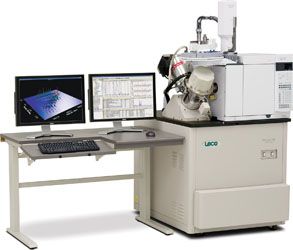Pegasus 4D GCxGC-TOFMS
LECO product profile

Routine Pegasus® 4D GCxGC-TOFMS optimisation is now even easier. Variable Modulation Times (VMT) feature was designed and implemented into LECO’s ChromaTOF® single software platform for even more flexibility. Traditional GCxGC uses a fixed modulation period and can result in an analytical compromise to the 1st dimension separation. The advantage of VMT enables the operator to specify at the click of a button their own and different modulation times throughout the GCxGC run. Typically, applications benefiting from GCxGC separations are matrix heavy &/or are complex samples containing a broad range of analytes. In such complex mixtures, early eluting and more volatile analytes actually require shorter modulation times whilst later eluting analytes (high boilers) require much longer modulation times. Using the new LECO VMT programming style results in graduated Pegasus 4D® GCxGC-TOFMS chromatograms in the 2nd dimension and so preserves the valuable separation in the first dimension. This feature maximizes resolution in both the first and second dimensions and is compatible with LECO’s traditional LN2 and Consumable Free (CF) Pegasus 4D® GCxGC-TOFMS instruments.
Join the experts in the field who routinely operate the Pegasus 4D® GCxGC-TOFMS and learn from their experiences. The 2nd European GCxGC Symposium takes place 20th & 21st September, University Regensburg, Germany. Registration is open, for more information contact the LECO Separation Science team.
Marie-Bernays-Ring 31
41199 Mönchengladbach
Germany
Tel: +49 (0)2166 687 -104 or -107
Email: SepSci@leco.de
Web address www.leco.com & www.leco-etc.com
New Method Explored for the Detection of CECs in Crops Irrigated with Contaminated Water
April 30th 2025This new study presents a validated QuEChERS–LC-MS/MS method for detecting eight persistent, mobile, and toxic substances in escarole, tomatoes, and tomato leaves irrigated with contaminated water.

.png&w=3840&q=75)

.png&w=3840&q=75)



.png&w=3840&q=75)



.png&w=3840&q=75)



